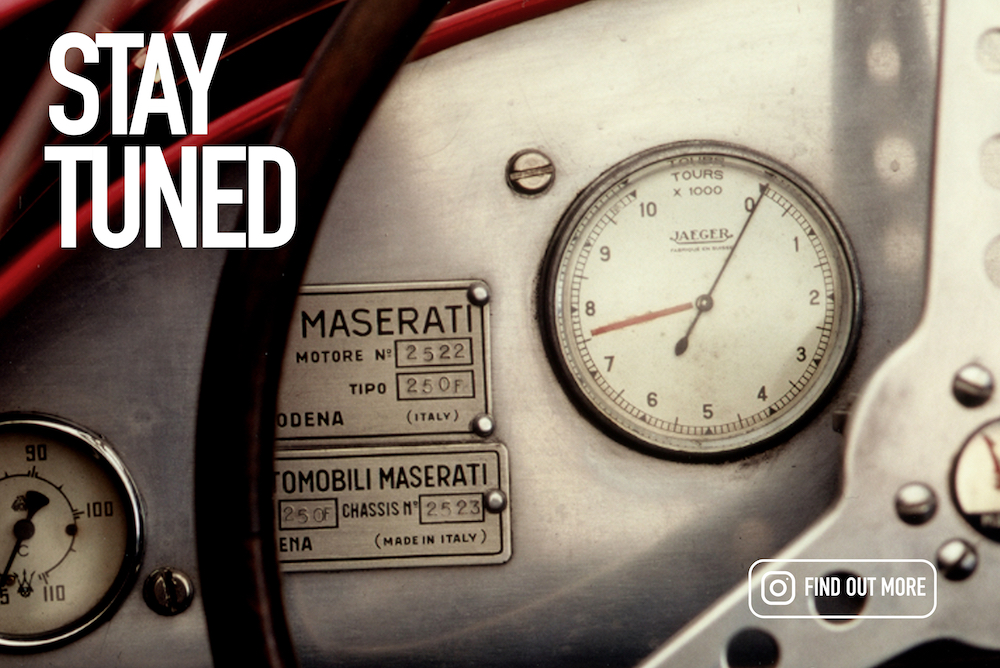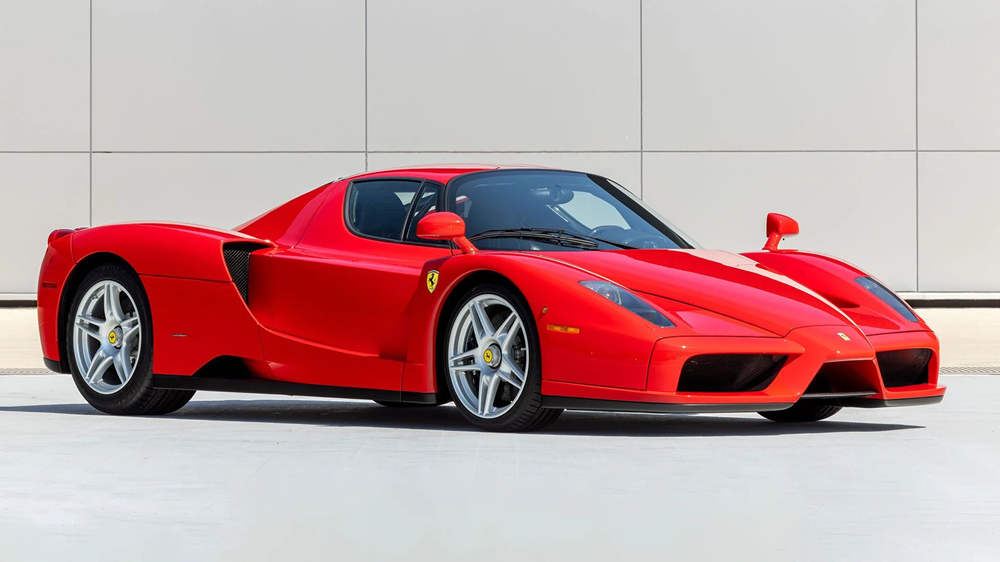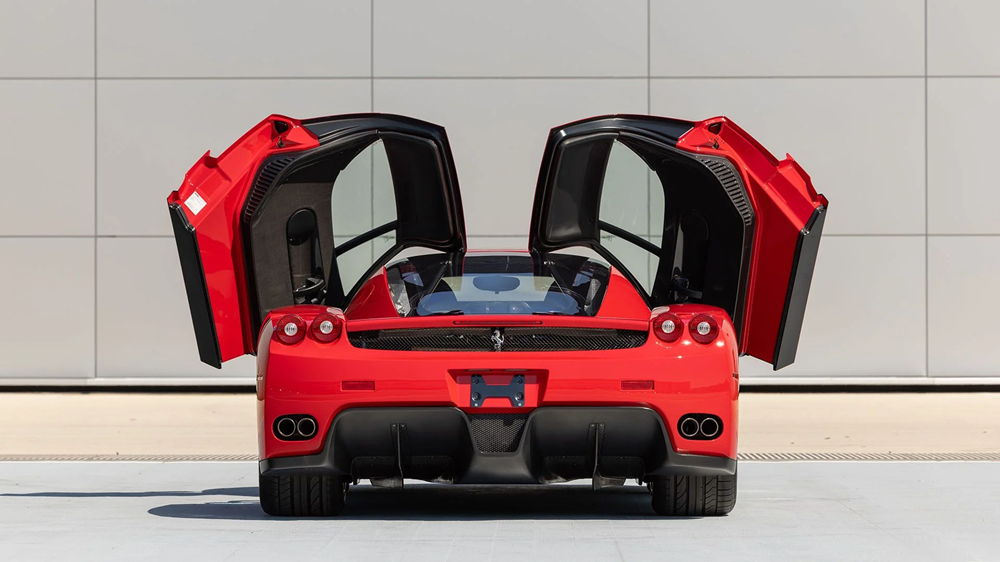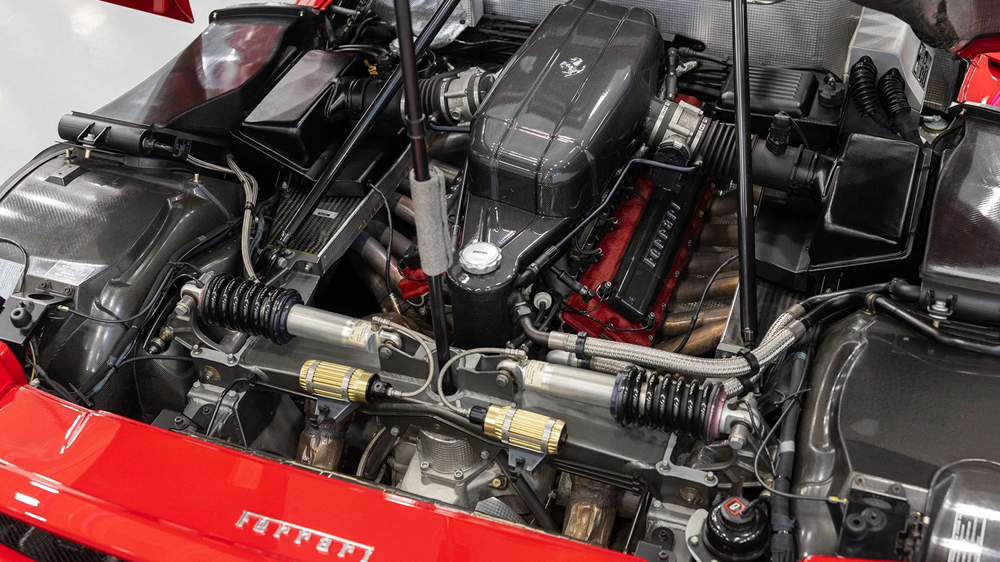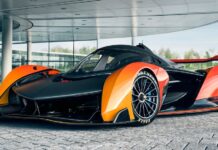Every so often, Ferrari has graced the automotive world with a new ultra-limited creation designed to showcase the latest Formula One technology in a production road car, each representing the state of the art at the time of their release (Chassis No. ZFFCW56A530133030).
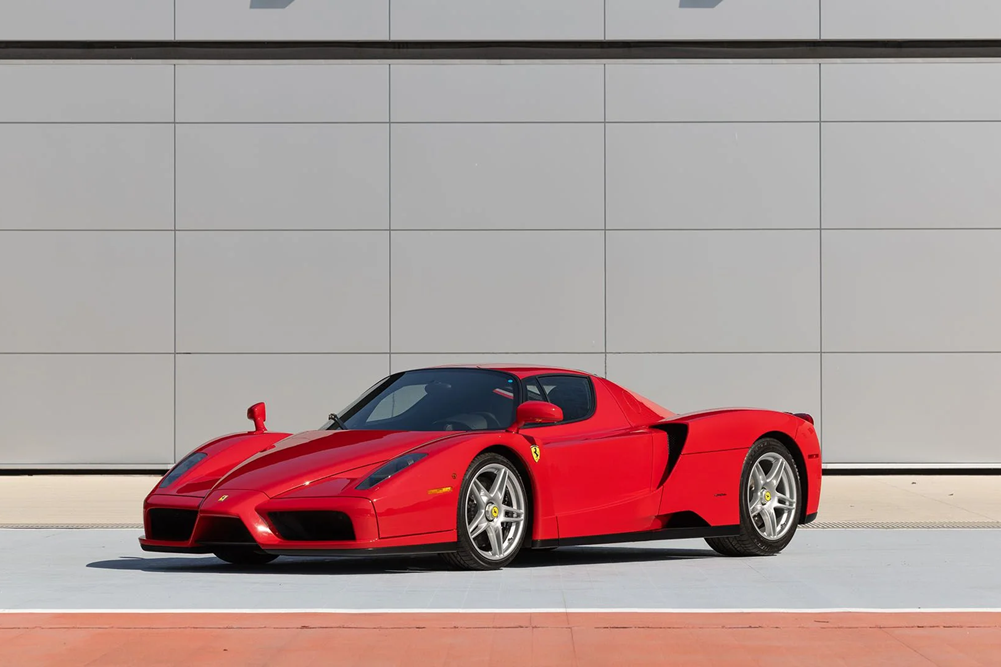
In the 1980s, Maranello engineers demonstrated the benefits of turbocharging with the pioneering performance of the homologation Ferrari 288 GTO, later utilizing the program to develop a new 40th-anniversary road car, the legendary Ferrari F40. The 1990s saw Formula One teams make giant leaps forward in technology with such advancements as active suspension, traction control, semi-automatic transmissions, and enhanced aerodynamics, reflected in the bristling innovations of the Ferrari F50 with its F1-derived naturally aspirated V12.
At the turn of the millennium, the Scuderia Ferrari Formula One Team was in the midst of an unprecedented period of dominance, having won the 1999, 2000, and 2001 Constructors’ Championships and the 2000 and 2001 Drivers’ Championships. In mid-2002, coinciding with Michael Schumacher’s third consecutive Drivers’ Championship for the Italian team, Ferrari debuted the Ferrari Enzo at the Paris Motor Show, named after il Commendatore himself and representing the zenith of the brand’s technological innovations up to that point.
Never before had a road-going Ferrari’s shape been so heavily dictated by aerodynamic efficiency. Its sleek carbon fiber and Kevlar-woven skin, penned by Pininfarina designer Ken Okuyama, was meticulously sculpted through extensive wind tunnel testing and saw the first use of active aerodynamics in the legendary supercar lineage. Breaking from the high-wing tradition of the F40 and F50, the Enzo instead utilized a subtle rear wing that raised and retracted in conjunction with front flaps hidden underneath the two front radiators to generate up to 758 pounds of downforce. Above 185 miles per hour, the aerodynamic aids reduced drag, enabling the Enzo to achieve its otherworldly 218 mile-per-hour top speed.
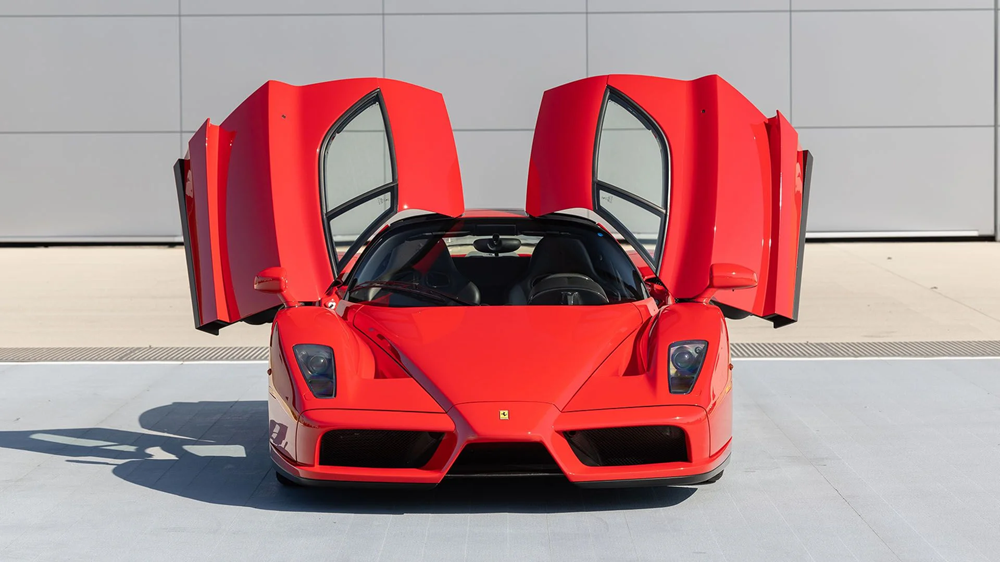
Beneath its clever, ultra-lightweight bodywork was an equally ingenious architecture consisting of a carbon fiber and aluminum honeycomb monocoque tub weighing just 202 pounds. Attached to its aluminum subframes were unequal-length wishbones with pushrod-operated springs and electronically controlled shock absorbers that could be adjusted from the cabin, offering both a “Sport” mode and a “Race” setting. Carbon-ceramic brake discs some 14.9 inches in diameter were developed specifically for the Enzo by Brembo, and marked the first time that the technology, employed for years by the Formula One team, was implemented in a Ferrari road car.
Where the F50’s V12 engine was an adaptation of the unit in the F92A Formula One car that left some drivers desiring more torque, the beating heart of the Enzo was an entirely new 65-degree, 6.0-liter V12. The naturally aspirated engine was specifically designed to deliver huge torque at low revs, with a maximum output of 660 horsepower at 7,800 rpm and 484 pound-feet of torque at 5,500 rpm. Mounted directly to the engine was an F1-derived, electrohydraulic-assisted paddle-shift six-speed transmission providing lightning-fast shift times of around 150 milliseconds.
While Ferrari had experimented in the past with bringing Formula One technology to the road, the Enzo was the first supercar of its kind to seamlessly integrate these technologies into a livable, everyday driving experience. The F40 and F50, while extremely quick on the track, had a reputation of being less than comfortable on the road. The Enzo, by contrast, offered excellent visibility, easy-to-operate steering wheel controls, minimal road noise, and a supple ride, all while being a full 2.1 seconds faster than the F50 around the short Fiorano test track. As a result, the Enzo’s cutting-edge innovations – its compact V12, carbon ceramic brakes, and advanced aerodynamics – have been implemented in every modern Ferrari since.
Of the 400 Enzos built, just 111 examples were delivered to the United States. This is one such U.S.-market example, finished in the timeless combination of Rosso Corsa paintwork over a Nero interior and delivered new to Florida. The accompanying clean CARFAX Vehicle History Report shows that the Enzo was first registered in July 2003 showing 141 miles at the time, remaining with its original owner until 2005. The Ferrari’s second owner, also based in Florida, purchased the car in December 2005 showing around 945 miles at the time. The car continued to be driven sparingly and was serviced on multiple occasions by Ferrari Maserati Alfa Romeo of Fort Lauderdale before entering into the current Illinois-based collection in 2009 with 2,803 miles.
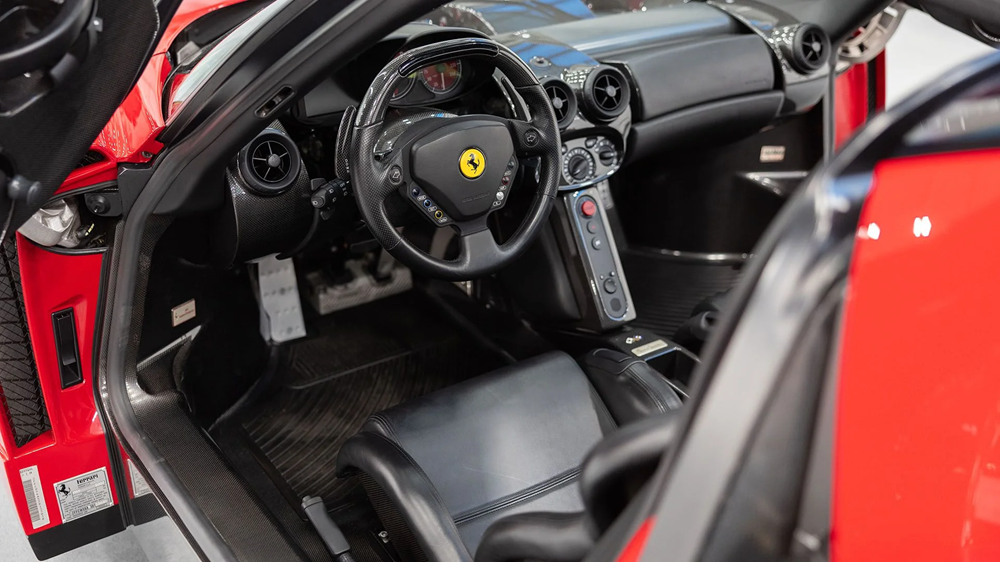
Offered from nearly 15 years of continuous ownership, the Enzo has been impeccably preserved, sparingly used, and fastidiously maintained by the current owner’s in-house Ferrari specialists. Most recently, a comprehensive service was conducted in April 2024 which included a full fluids change (oil, brake fluid, transmission fluid, coolant), replacing the auxiliary belts, replacing the battery, mounting a fresh set of Bridgestone Potenza tires, and installing new TPMS sensors. Also while under current ownership, the Ferrari was awarded the coveted Ferrari Classiche certification in September 2011, a hallmark of the finest examples of the Prancing Horse. The car’s impeccable presentation is further bolstered by numerous Ferrari Club of America awards, including multiple Platinum Awards (2009, 2013, 2016 – 100-point score), Contemporary Ferrari Awards (2009, 2013), a Greatest V-12 Award (2016), a Coppa Bella Macchina Award (2009), and a Coppa GT Award (2009). Now showing just 4,333 miles since new at the time of cataloging, this phenomenal Enzo is offered with its tool kit, manuals and flashlight in their leather folio, car cover, tire inflator, and wheel socket.
The Ferrari Enzo represents the pinnacle of road and racing technology at the time of its introduction and dispelled the myth that these technologies could not be implemented into a civilized production car. With only 400 examples built, it is a landmark model in the history of the marque and would make a fantastic centerpiece in any supercar collection, or a crowning acquisition for a collector looking to complete the “Big Five” quintet of Ferrari supercars.
find more news here…
